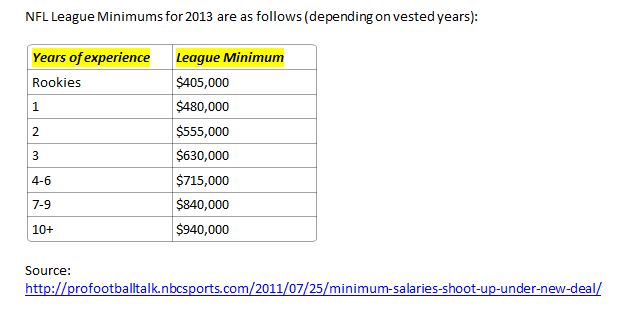![Eli Manning Conference Call and Other Player Q&As]()
by Eric Kennedy | Jan 27, 2016 | News and Notes
[contentblock id=1 img=html.png] ELI MANNING CONFERENCE CALL… The transcript of Wednesday’s media conference call with New York Giants quarterback Eli Manning is available in The Corner Forum section of the website. Manning was asked about his thoughts on...

by Optimus-NY | Nov 20, 2013 | Articles, The Salary Cap
November 20, 2013 NFL Salary Cap Update: Here is the latest update for all 32 teams in the league with regard to available salary cap space (courtesy of the NFLPA’s League Cap Report website): CAP SPACE RANKTEAMPREVIOUS YEAR CARRYOVERTOTAL CAP SPACE...
by Optimus-NY | May 20, 2013 | Articles, The Salary Cap
The NFL Salary Cap and the New York Giants: In today’s NFL, the salary cap rules all. The NFL salary cap is an opponent that many front offices have simply dealt with on an intermediate level, a few have mastered, and a few more have fallen to ruin against as a result...


